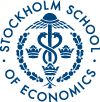No 1999:10: A Tutorial on Residual Income Valuation and Value Added Valuation
Kenth Skogsvik ()
Additional contact information
Kenth Skogsvik: Dept. of Business Administration, Stockholm School of Economics, Postal: P.O. Box 6501, S-113 83 Stockholm, Sweden
Abstract: Two valuation models based on accounting concepts and measurements are specified and discussed in the paper - a "residual income valuation" model and a "value added valuation" model. Given clean surplus accounting, the first model is identical to a model where future expected dividends and a horizon value of owners' equity are discounted to a present value. Similarly, the second model is identical to a free cash flow valuation framework, as specified in the well-known "McKinsey model" (Copeland, Koller & Murrin, 1994). The valuation models being specified in the paper use accounting measures of capital, capital growth and return on capital to calculate a fundamental value of owners' equity. As a certain connection between the required market rate of return ("cost of capital"), the accounting return on capital and capital growth can be expected to hold in the long run, the valuation models provide for some simplification of typical prediction problems inherent in fundamental valuation analysis.
Keywords: Conservative accounting; economic value added; financial ratios; fundamental analysis; residual income; valuation
25 pages, First version: October 27, 1999. Revised: September 3, 2002.
Full text files
hastba1999_010.pdfFull text
Questions (including download problems) about the papers in this series should be directed to Helena Lundin ()
Report other problems with accessing this service to Sune Karlsson ().
RePEc:hhb:hastba:1999_010This page generated on 2024-09-13 22:19:29.

